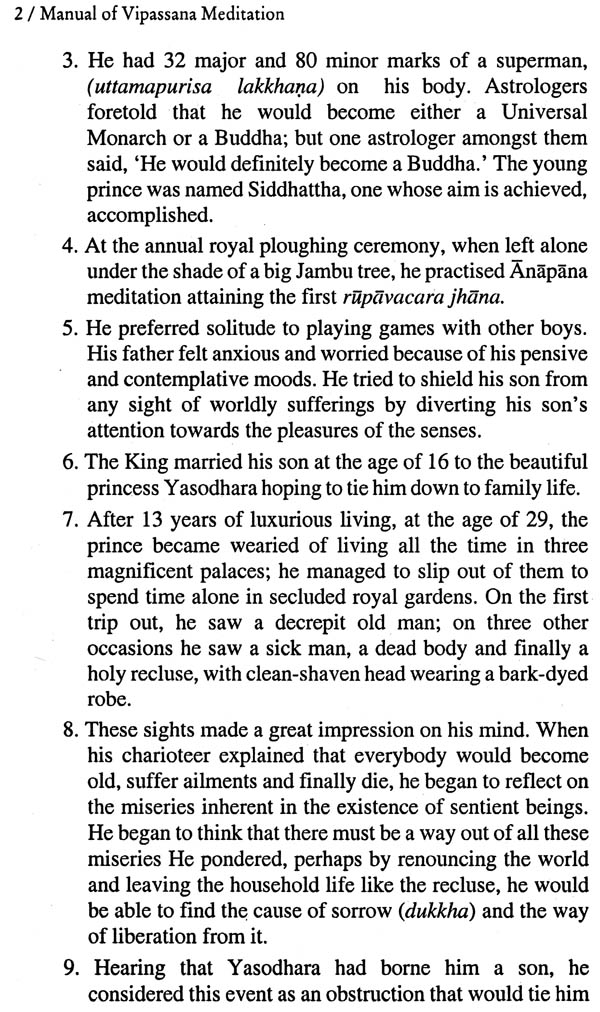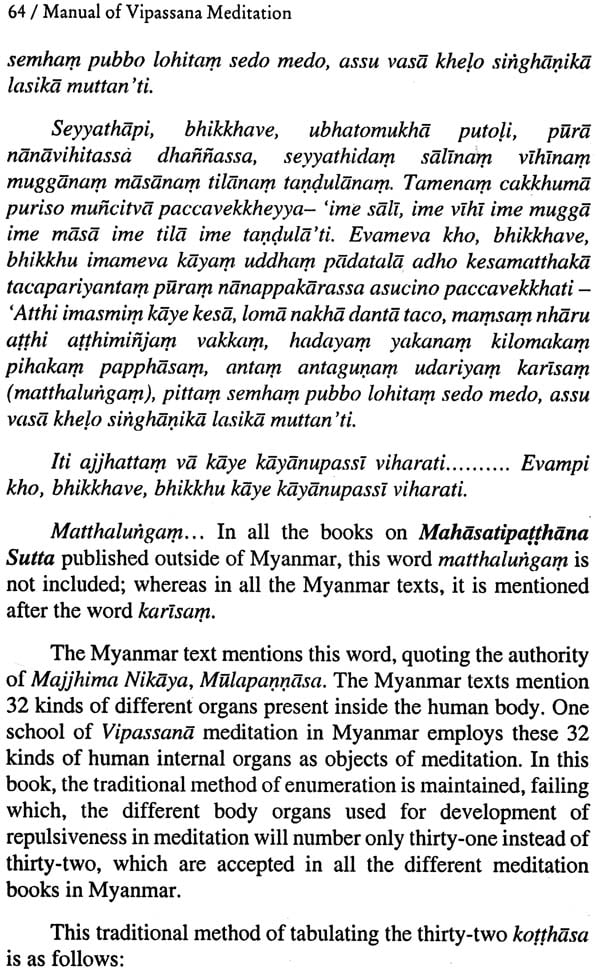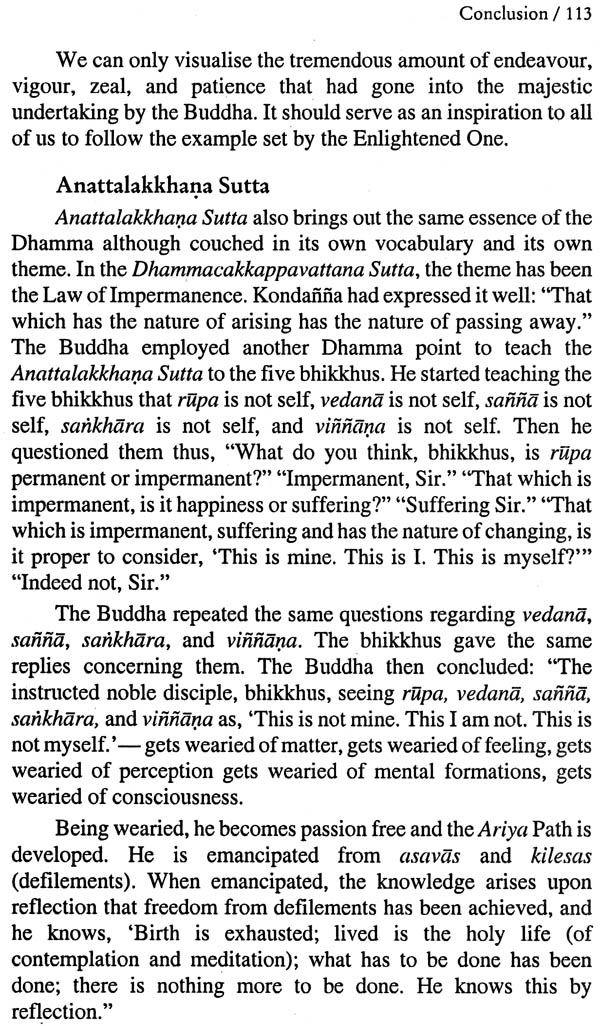
Manual of Vipassana Meditation
Book Specification
| Item Code: | NAW163 |
| Author: | U Ko Lay |
| Publisher: | Vipassana Research Institute |
| Language: | English |
| Edition: | 2017 |
| ISBN: | 8174142290 |
| Pages: | 132 |
| Cover: | PAPERBACK |
| Other Details | 8.50 X 5.50 inch |
| Weight | 170 gm |
Book Description
This Manual is a collection of my lectures, which have been much expanded and annotated. They were given to the first year | students at the International Buddhist Missionary University where I had acted as the Head of Department of Vipassana Meditation in the Faculty of Patipatti.
Vipassana Meditation is the unique practice taught by the Buddha. The Teachings of the Buddha are extremely vast, all enshrined in the three baskets of Tipitaka— Vinaya, Suttanta and Abhidhamma. The immense wisdom of the Buddha has given us this tremendous wealth of the knowledge of the Truth, considered from all aspects and angles. The same immense wisdom of the Buddha has also put all of his teachings in a nutshell, as it were, in three neat verses. I am referring to ovada patimokkha gathas which give a brief summary of his teachings.
Let me now present to you the three verses of this Ovada Patimokkha Gatha ;
1. ‘khanti paramam tapo titikkha,
nibbanam paramam vadanti buddha;
na hi pabbajito pariipaghati,
na samano hoti param vihelhayanto.
Forbearing Patience is the highest moral practice "Nibbana 1S supreme" say the Buddhas. A bhikkhu does not harm others. One who harms others is not a bhikkhu.
2. ‘sabbapapassa akaranam,
kusalassa upasampada;
sacittapariyodapanam,
etam buddhanasasanam.
Not to do evil, to cultivate merit (good deed), to purify one’s mind. This is the teaching of the Buddhas.
3. ‘aniipavado anipaghato,
patimokkhe ca samvaro;
mattannuta ca bhattasmim,
pantarica sayanasanam;
adhicitte ca ayogo,
etam buddhanasasanan ti.
Not to revile, not to do any harm, to practice retraint in the Fundamental Precepts, to be moderate in taking food, to dwell in a secluded place, intent on higher thoughts. This is the teaching of the Buddhas.
How short, how simple, how easy to understand from this clear concise exhortation of the Buddhas; we know as true disciples of the Buddha, what we should avoid, restrain doing; and what we should assiduously cultivate and practice. Simple yes; but the big question is, how to put this clear, concise advice of all the Buddhas into practice, into daily practice, into lifelong practice, how to make the practice as part and parcel of our life.
Nearly all religions teach their respective followers to avoid evil and cultivate good deeds. But none of them shows the method of how to avoid evil and cultivate good deeds. It is unique that Buddhism alone teaches how to put into practice what it teaches. The teachings of the Buddha are known as Dhamma which is universal, ethical and moral Truth. This Dhamma is not just to be preserved in books; nor is it to be learnt for academic games of discussions, disputations, arguments and dissensions. It is to be learnt to be put into practice in the course of daily life; it is to be studied, to be practised and above all, to be realized. The ultimate goal of the Dhamma is the realization of the Four Noble Truths.
The sole purpose and aim of this Manual is to help the serious students to find peace and happiness and ultimate realization of Nibbanic peace by means of Vipassana Meditation.
In the rapidly changing world of material development at the sacrifice of moral and spiritual advancement, Vipassana Meditation practice, still being kept in its pristine purity in Myanmar, has a definite role to play for the promotion of welfare, peace, harmony and happiness of mankind.
**Contents and Sample Pages**













